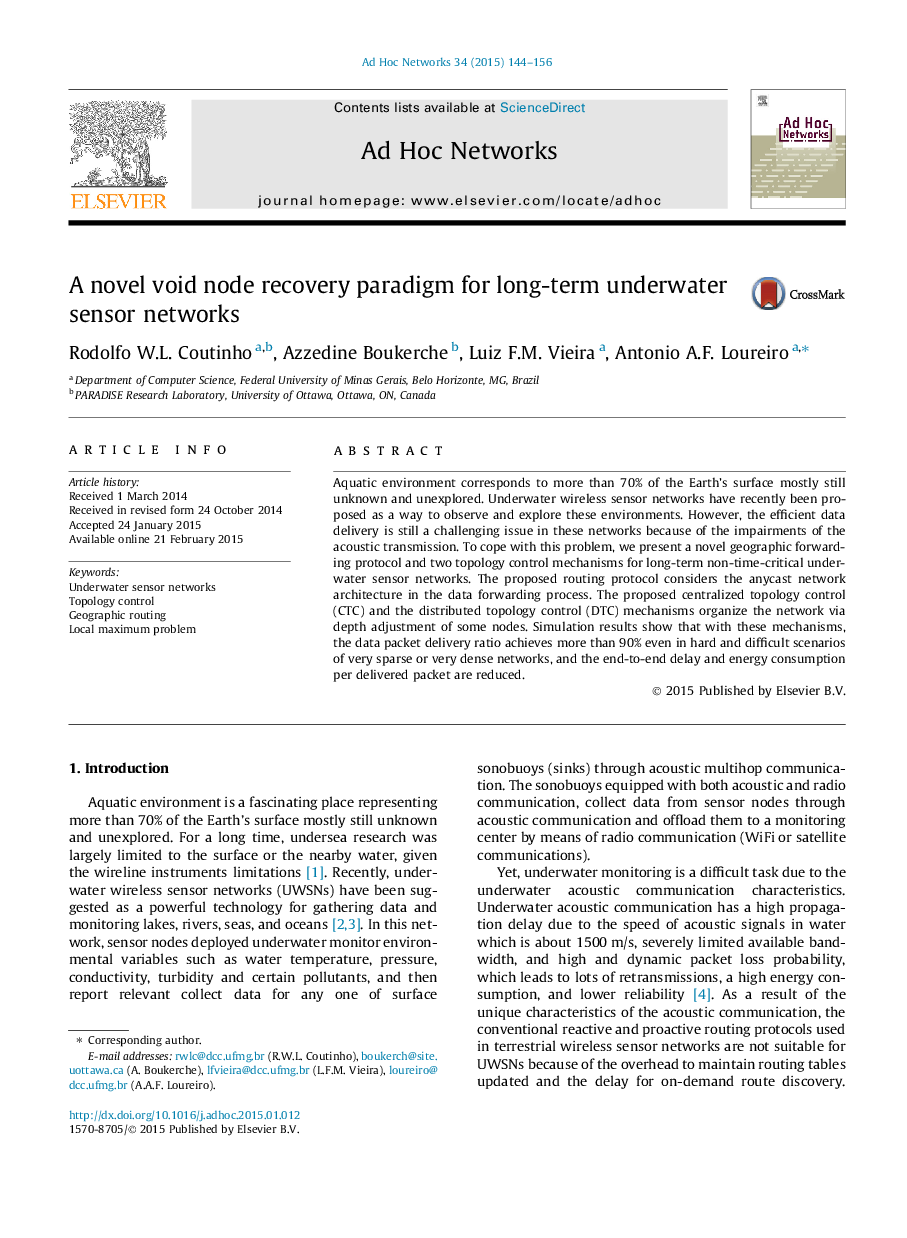| Article ID | Journal | Published Year | Pages | File Type |
|---|---|---|---|---|
| 445607 | Ad Hoc Networks | 2015 | 13 Pages |
Aquatic environment corresponds to more than 70% of the Earth’s surface mostly still unknown and unexplored. Underwater wireless sensor networks have recently been proposed as a way to observe and explore these environments. However, the efficient data delivery is still a challenging issue in these networks because of the impairments of the acoustic transmission. To cope with this problem, we present a novel geographic forwarding protocol and two topology control mechanisms for long-term non-time-critical underwater sensor networks. The proposed routing protocol considers the anycast network architecture in the data forwarding process. The proposed centralized topology control (CTC) and the distributed topology control (DTC) mechanisms organize the network via depth adjustment of some nodes. Simulation results show that with these mechanisms, the data packet delivery ratio achieves more than 90% even in hard and difficult scenarios of very sparse or very dense networks, and the end-to-end delay and energy consumption per delivered packet are reduced.
